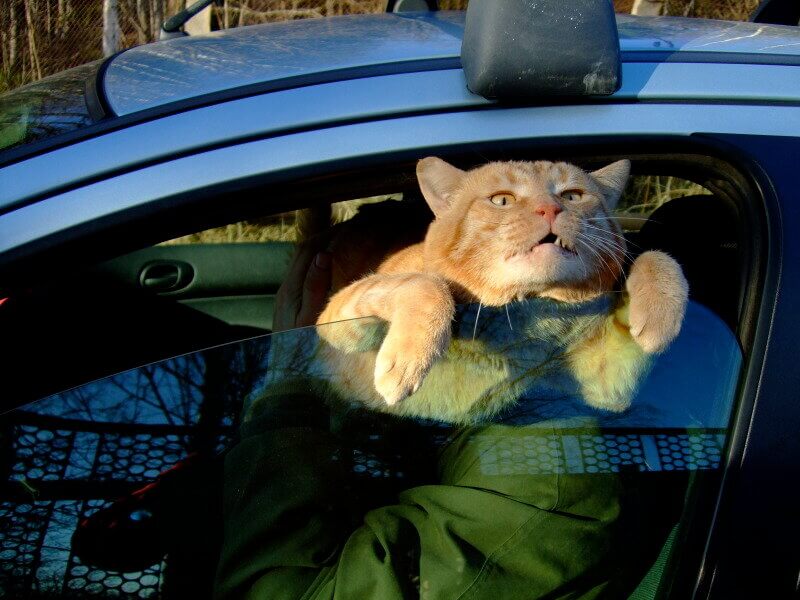Cats love catnip, that much is clear. Surely you’ve given your kitty toys with catnip and watched her behave in the most fun ways. But where does the intoxicating effect of the plant actually come from? And can the “drug” also be harmful? We answer the most important questions about catnip for you here.
What Is Catnip?

The catnip is a perennial genus that includes around 250 different species. When we speak of catnip, we usually mean the species “Nepeta cataria”, which is also called “real catnip”, “cat balm” or “catnip” in English. This plant belongs to the mint family and is one of the few types of catnip that can also be found in home gardens. Nepeta cataria also has the strongest effect on our velvet paws. The catnip got its name from its special attraction to cats. Not only house tigers are wild after the plant – lions, lynxes, and other wild cats are also intoxicated by the smell of mint. Most of the subspecies of the genus grow in arid regions in Europe, Asia, and North Africa. However, some species are also found in forests or mountains.
What is the Effect on Cats?
When we offer our fur-nosed toys with dried catnip, they rub against it or wallow in it. Often they lick the toy for minutes and purr with relish. The scents of catnip encourage the coziest house tigers to play. So if your cat rarely lets itself be lured out of the reserve, you can help with catnip toys. In contrast, the plant has a calming effect on nervous and stressed cats. The kitties cannot leave the plant in the garden either. They roll around in the bush or chew on the leaves and flowers. Sometimes cats are particularly active and playful after enjoying the mint, as the plant has a euphoric effect on them. Some cats become downright intoxicated by the herb and show unusual behavior.
What is it That Makes Them so Special?
The Nepeta plant contains the active substances nepetalactone and actinidin. Nepetalactone is a pheromone that protects the plant from insects. Actinidin is also found in other plants such as valerian, which has a stimulating effect on cats similar to that of Catnip. Actinidine is believed to act as a deterrent to birds and arthropods. Mint is therefore very popular as a garden plant because it protects the plants in their environment from insect infestation. How exactly these substances affect cats is not yet known. Nepeta does not work in kittens or older cats. Otherwise, the effect is independent of the sex and breed of the animal. Neutered cats react to the plants in the same way as non-neutered animals. Some kitties react strongly to the plant, others not at all. It is therefore believed that the preference for the herb is inherited.
Is Catnip Dangerous for Cats?
Because catnip induces a high-like state, some cat owners fear that the plant can make Nepeta dependent. In general, however, catnip is completely safe for cats. Withdrawal symptoms are also not known. However, if your cat swallows too much catnip, it could lead to gastrointestinal problems. We recommend that you only offer cuddly pillows or other toys from time to time so that your cat will be interested in them for a longer period of time. A plant in the apartment can also overwhelm your cat, as it would then be constantly exposed to the pronounced sensory stimulus of mint.
Toy with Catnip
Catnip has a beguiling effect on our kitties. In cat toys, it stimulates play and gives your cat a feeling of elation. Catnip cushions are particularly popular. You will be cuddled and played with even by the quietest house tigers. Balls and mice with Catnip stimulate your cat’s hunting instinct. Often our fur noses can chase the toy for hours. As an alternative to ready-made catnip toys, you can buy catnip spray and spray your cat’s toy with it. You can also easily make Catnip toys yourself, for example by filling an old sock with dried catnip and then sewing it into a pillow or attaching it to a cat rod with a cord.
What Else Can it Be Used For?
Nepeta cataria induces well-being in many cats. You can use dried flowers and leaves to accustom your cat to specific places in your home. Would you like your kitty to sleep in her new cat basket more often than in your bed? Then sprinkle some catnip in her basket and she will automatically claim the space as her own. You can also use the smell of the plant for transport or when moving so that your cat feels more comfortable. Catnip spray is also practical, which you can spray when you socialize two cats in the apartment so that the two kitties are more relaxed.
Plant Catnip Yourself

Not only your cat can benefit from the Nepeta plant. It also has many advantages in your own garden. Catnip protects against unwanted insects such as mosquitoes and pests. In addition, the perennials with their mostly white or blue flowers are very easy to care for and robust. If you plan to grow catnip yourself, you should choose a sunny location. There is not much to consider when caring for the plant. After the main bloom, you can cut back the Nepeta so that it blooms again in autumn. In summer the perennial can be multiplied by dividing.
